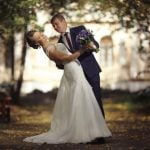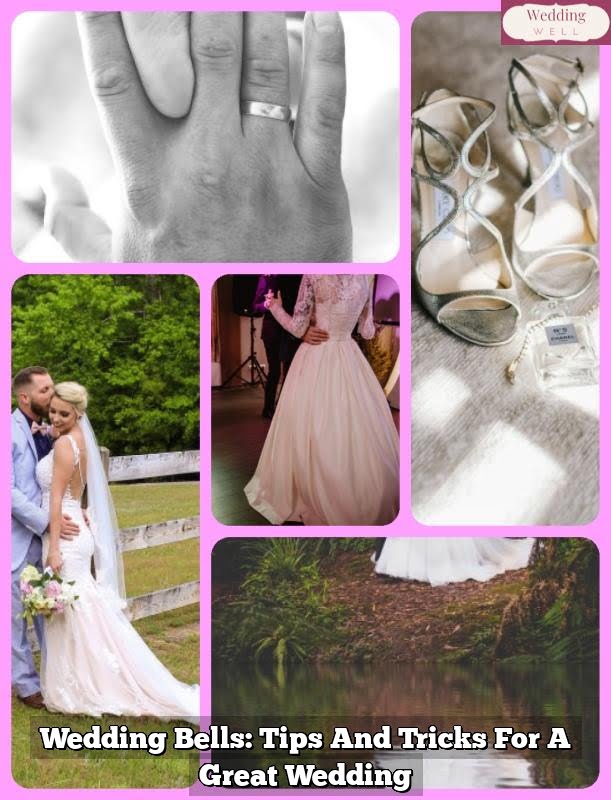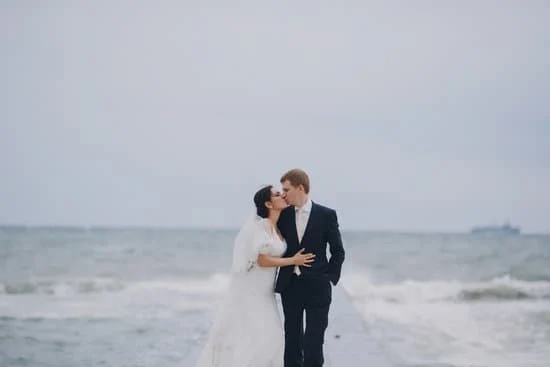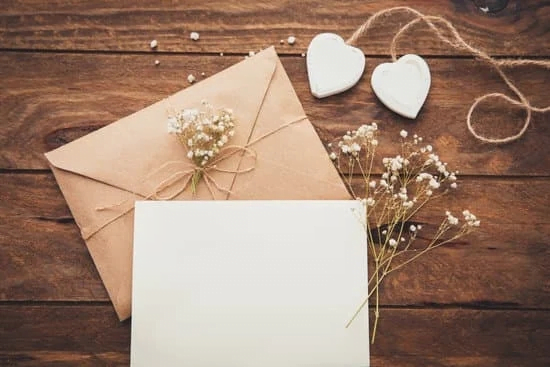Are you looking to learn more about the lively and joyful tradition of the Hora Jewish Wedding? The Hora dance is a central part of Jewish wedding celebrations, bringing together family and friends to celebrate the union of the newlyweds. From its history and origins to its modern interpretations, this article will explore the rich tradition of the Hora dance in Jewish weddings.
The Hora dance holds significant cultural and symbolic meaning within Jewish weddings, representing unity, joy, and celebration. Dating back centuries, this tradition has deep roots in Jewish culture and continues to be a beloved custom at weddings around the world.
In this article, we will delve into the history and origins of the Hora dance, uncovering its roots in Jewish traditions and exploring how it has evolved over time. We will also examine the symbolism behind this vibrant dance and how it is incorporated into the wedding ceremony.
Whether you are planning a Jewish wedding or simply want to learn more about this beautiful tradition, join us as we explore the timeless joy and celebration of the Hora Jewish Wedding Tradition.
History and Origins of the Hora Dance in Jewish Weddings
The Hora dance is a traditional Jewish circle dance that is commonly performed during weddings and other joyous occasions. The origins of the Hora dance can be traced back to the Jewish communities in Eastern Europe, particularly in Romania and Ukraine. It is believed that the Hora dance was originally a festive folk dance that was performed in rural villages to celebrate special events such as weddings, harvests, and holidays.
The history of the Hora dance in Jewish weddings dates back centuries and has deep cultural roots within the Jewish community. The dance symbolizes unity, joy, and celebration, making it a central element of traditional Jewish wedding ceremonies. As the bride and groom are lifted on chairs during the Hora dance, it signifies their elevation into a new chapter of their lives and the support of their family and friends as they start their journey together as a married couple.
Over time, the Hora dance has evolved into a beloved tradition that is cherished by Jewish communities around the world. It has become an iconic symbol of Jewish culture and is often one of the most anticipated parts of a wedding celebration. The timeless essence of the Hora dance continues to bring people together in joyous celebration, creating unforgettable memories for both the newlyweds and their loved ones.
As couples embrace modern interpretations and variations of the Hora dance in their wedding ceremonies, they honor its rich history while infusing personal elements that reflect their unique love story. Whether performed to traditional klezmer music or modern tunes, the Hora remains a cherished tradition that brings people together in joyful celebration during Jewish weddings.
The Symbolism and Meaning Behind the Hora Dance
The Hora Dance, a traditional part of Jewish wedding celebrations, holds deep symbolism and meaning within the Jewish culture. This lively and spirited dance represents unity, community, and joy as it brings people together in celebration.
The circular movements of the dance symbolize the unending and eternal nature of love and marriage, signifying the couple’s commitment to each other. Additionally, the act of lifting the bride and groom on chairs during the Hora Dance reflects support and elevation as they begin their new life together as a married couple.
The Hora Dance is also steeped in historical significance for the Jewish people. Originating in Eastern Europe, it has been a part of Jewish wedding traditions for centuries. The dance served as a way to bring happiness and hope to communities that faced hardship and persecution. It provided an opportunity for people to come together in solidarity and celebrate moments of joy amidst challenging times.
During the Hora Dance at a Jewish wedding, guests join hands and form a circle or spiral shape as they move in rhythm to the joyful music. This dance is not only a joyful expression of celebration but also serves as a reminder of the strength of community and support that surrounds the newlywed couple as they begin their married life together.
- The circular formation of dancers
- Lifting the bride and groom on chairs
- Historical significance for Jewish communities
How the Hora Dance Is Incorporated Into the Jewish Wedding Ceremony
The Hora dance is an integral part of a traditional Jewish wedding ceremony, symbolizing joy, celebration, and unity within the community. This lively and energetic dance typically takes place after the wedding ceremony and before the meal, serving as a highlight of the reception. The Hora dance involves both the bride and groom, as well as their families and guests, coming together to form a circle and dance in unison.
Circle Dance
Incorporating the Hora dance into the Jewish wedding ceremony begins with forming a circle on the dance floor. The bride and groom are usually lifted onto chairs by their guests while holding onto a cloth or their hands, symbolizing support and strength as they begin their journey together. This tradition is a powerful representation of the couple being surrounded by love and encouragement from their loved ones.
Unity and Togetherness
As the Hora dance progresses, it is common for friends and family members to join hands and form additional circles around the main one. This act signifies not only unity between the bride and groom but also unity within their community. By dancing together in circles, everyone becomes interconnected symbolizing support, solidarity, and loyalty to each other.
The incorporation of such a lively celebration into the Jewish wedding ceremony emphasizes that marriage is not only about commitment between two individuals but also about community involvement. The Hora dance truly captures the spirit of joyous celebration within Jewish culture, creating enduring memories for all involved.
It’s clear that incorporating the Hora dance into a Jewish wedding ceremony adds a unique element of festivity while reinforcing strong traditions that have been passed down through generations.
The Traditional Music and Instruments Used During the Hora Dance
The Hora Jewish Wedding tradition is a beautiful and joyous celebration that is filled with meaningful rituals and customs. One of the key elements of this tradition is the Hora dance, which is accompanied by traditional music and instruments that add to the festive atmosphere of the wedding. The music and instruments used during the Hora dance hold great significance and are an integral part of this timeless tradition.
The music that accompanies the Hora dance is typically lively and upbeat, reflecting the joyous mood of the wedding celebration. It is often performed by a live band or ensemble, adding an authentic and vibrant energy to the dance. The use of traditional instruments such as the clarinet, accordion, violin, and drum creates a rich and lively sound that enhances the overall experience of the Hora dance.
The Traditional Music and Instruments Used During the Hora Dance Include
- Clarinet: Known for its distinct sound, the clarinet adds a bright and cheerful tone to the music played during the Hora dance.
- Accordion: This versatile instrument provides a rhythmic accompaniment to the dance, creating an infectious beat that encourages guests to join in.
- Violin: The melodic sound of the violin adds a touch of elegance to the music, enhancing the overall celebratory atmosphere.
- Drum: The driving rhythm of the drum sets a lively pace for dancers as they joyfully circle around in celebration.
As couples and their guests join hands and form a circle during the Hora dance, these traditional instruments come together to create a symphony of sound that fills the air with happiness and excitement. The music and instruments used during this cherished tradition play a vital role in creating an unforgettable experience for everyone involved in a Hora Jewish wedding.
The Steps and Movements Involved in the Hora Dance
The Hora dance is one of the most beloved and anticipated traditions at a Jewish wedding. This lively and energetic circle dance involves a series of steps and movements that symbolize unity, joy, and celebration. The Hora is typically performed to traditional Jewish music, and it signifies the coming together of the bride and groom, their families, and the entire community in a joyous expression of love and happiness.
Circle Formation
The Hora dance begins with participants forming a large circle on the dance floor. The bride and groom are usually positioned at the center of the circle, symbolizing their importance as the focal point of the celebration. Family members, friends, and guests then link hands to form the outer ring of the circle, creating a sense of unity and togetherness.
Upward Arm Movements
As the music starts playing, the dancers begin to move in a circular motion around the bride and groom. They raise their linked arms into the air and step from side to side, creating an upward swinging motion that represents upliftment, support, and exuberance. This movement symbolizes lifting up the newly married couple on their special day while expressing blessings for a joyful future together.
Synchronized Steps
The Hora dancers coordinate their steps with each other as they move in unison around the dance floor. Typically, this involves stepping forward or backward in time with the beat of the music while continuing to hold hands with those around them. This synchronized movement represents harmony, cooperation, and shared purpose within the community as everyone comes together to celebrate the union of two people in marriage.
As one of the most spirited elements of a Jewish wedding celebration, it’s no wonder that couples cherish their memories of participating in or witnessing this joyful tradition. Throughout history, countless stories have been passed down about unforgettable moments during Hora dances at weddings, reflecting its enduring significance in Jewish culture.
With its rich history and timeless symbolism, it’s no surprise that modern interpretations and variations of the Hora dance continue to thrive within Jewish wedding celebrations today. From incorporating new styles of music to introducing creative choreography, couples are finding innovative ways to honor this cherished tradition while making it uniquely their own.
Whether through traditional rituals or contemporary twists on old customs, one thing remains constant: The Hora Jewish wedding tradition continues to bring boundless happiness and unity to those who take part in it.
Stories and Personal Experiences of the Hora Jewish Wedding From Couples and Guests
One of the most cherished parts of a Jewish wedding is the Hora dance, and it holds a special place in the hearts of many couples and guests. The Hora dance typically takes place after the wedding ceremony, and it is a time for all the guests to come together and celebrate the newlyweds. Many couples have shared heartwarming stories of their experience with the Hora, describing it as a moment filled with love, joy, and unity.
For many couples, participating in the Hora dance is an incredibly emotional experience. As they are lifted into the air on chairs by their loved ones, they feel surrounded by support and happiness. This tradition symbolizes not only the couple’s union but also the union of their families and friends coming together to celebrate this special occasion. It is a moment that creates lasting memories for everyone involved.
Similarly, guests at a Jewish wedding often look forward to the Hora dance as one of the highlights of the celebration. They eagerly join in, linking arms and dancing in circles, creating an atmosphere of exuberance and camaraderie. For many guests, this tradition represents not only the celebration of love but also a deeply cherished connection to their cultural heritage. The hora jewish wedding tradition truly brings people together in a spirit of love and jubilation.
Modern Interpretations and Variations of the Hora Dance in Jewish Weddings
The Hora dance is a beloved tradition in Jewish weddings, symbolizing unity, joy, and celebration among the newlywed couple and their guests. Over time, the Hora has evolved and taken on modern interpretations and variations, allowing couples to put their own unique spin on this timeless tradition.
One modern interpretation of the Hora dance is the inclusion of non-traditional music and instruments. While traditional Jewish music and instruments such as the clarinet, violin, and accordion are often used during the Hora dance, some couples opt for a more contemporary approach by incorporating pop or rock music and even live bands or DJs. This adds a fun and energetic twist to the Hora dance while still honoring its roots.
Another variation of the Hora dance in modern Jewish weddings is the choreography itself. Many couples choose to take dance lessons prior to their wedding in order to add more flair and creativity to their Hora dance. This may involve incorporating different dance styles such as salsa or hip-hop into the traditional circle formation, creating a memorable experience for both the couple and their guests.
In addition to these modern interpretations, some couples also personalize the Hora dance by including meaningful cultural or familial elements. For example, they may incorporate rituals or customs from their respective heritages into the Hora dance, showcasing the coming together of two families in a meaningful way. These personalized touches further enhance the significance of this cherished tradition in Jewish weddings.
| Modern Interpretations/Variations | Description |
|---|---|
| Non-traditional music & instruments | Incorporation of pop/rock music or live bands/DJs |
| Choreography | Couples taking dance lessons; incorporating different dance styles |
| Personalization | Inclusion of meaningful cultural/familial elements from respective heritages |
Conclusion
In conclusion, the Hora Jewish wedding tradition is a timeless celebration of joy and unity that has been passed down through generations. The history and origins of the Hora dance showcase the rich cultural significance and symbolism behind this lively and spirited tradition. As an integral part of the Jewish wedding ceremony, the Hora dance brings together family and friends in a jubilant display of love and support for the newlywed couple.
The traditional music and instruments used during the Hora dance add to the festive atmosphere, creating an uplifting and heartwarming experience for all in attendance. Additionally, the steps and movements involved in the Hora dance symbolize community, harmony, and solidarity, reflecting the core values of Jewish culture.
Furthermore, modern interpretations and variations of the Hora dance continue to keep this cherished tradition relevant and meaningful in contemporary wedding celebrations. From intimate gatherings to grand affairs, the Hora dance remains a highlight of Jewish weddings, bringing people together in a shared expression of joy and happiness. It is clear that the Hora Jewish wedding tradition will continue to be a beloved cornerstone of wedding festivities for years to come.
Frequently Asked Questions
What Is the Hora at a Jewish Wedding?
The Hora is a traditional circle dance typically performed at Jewish weddings. It is a joyous and lively celebration where guests form a circle and dance to traditional Jewish music.
What Is the Timing of a Jewish Wedding?
The timing of a Jewish wedding can vary, but it often takes place on Sunday during the day, following the conclusion of the Jewish Sabbath on Saturday night. Some couples may choose to have their wedding on other days, depending on their preferences and religious observance.
What Is the Significance of Horah?
The significance of Horah lies in its symbolism of community, celebration, and unity. It brings people together in a joyful expression of tradition and culture, creating a sense of connection and shared experience among wedding guests. The spirited dancing also reflects the couple’s happiness and serves as a blessing for their future together.

Welcome to my blog about home and family. This blog is a place where I will share my thoughts, ideas, and experiences related to these important topics. I am a stay-at-home mom with two young children. I hope you enjoy reading it! and may find some helpful tips and ideas that will make your home and family life even better!





